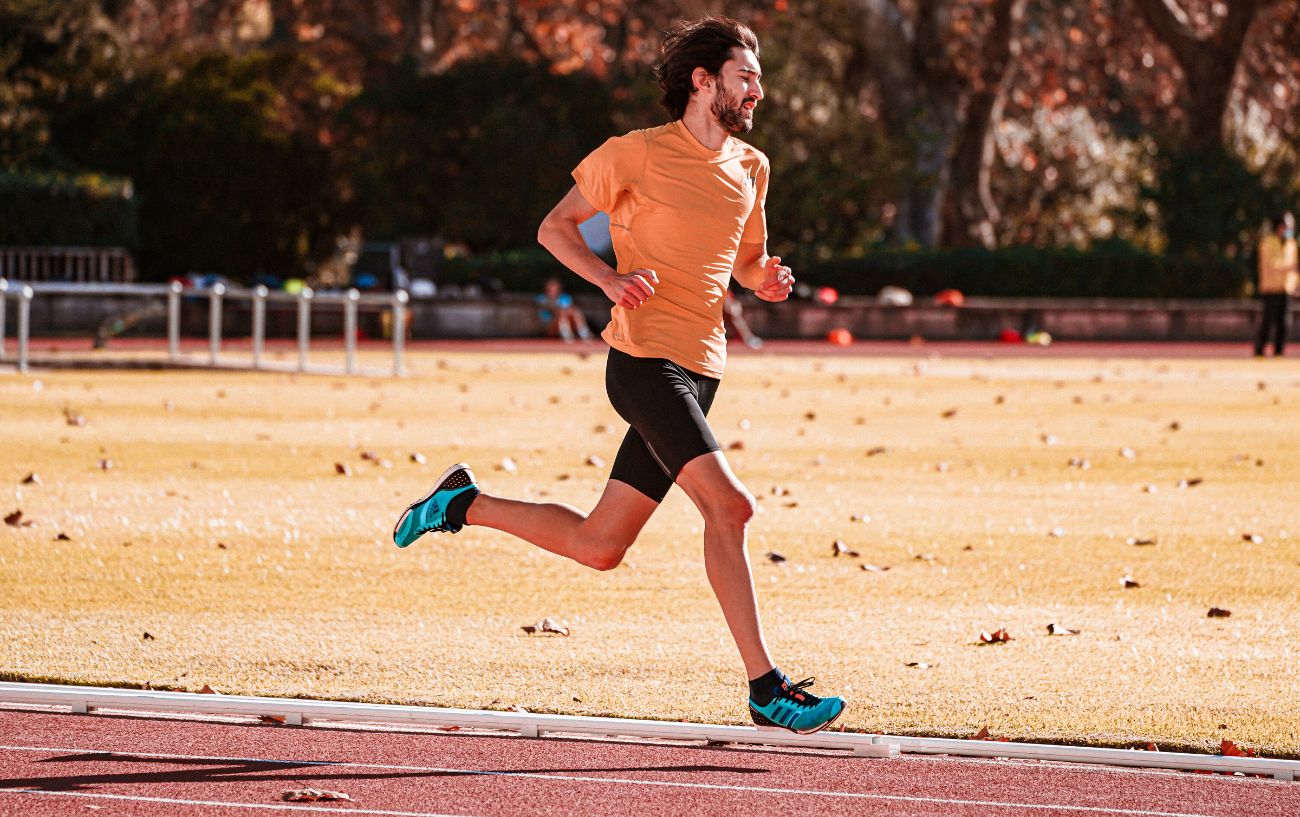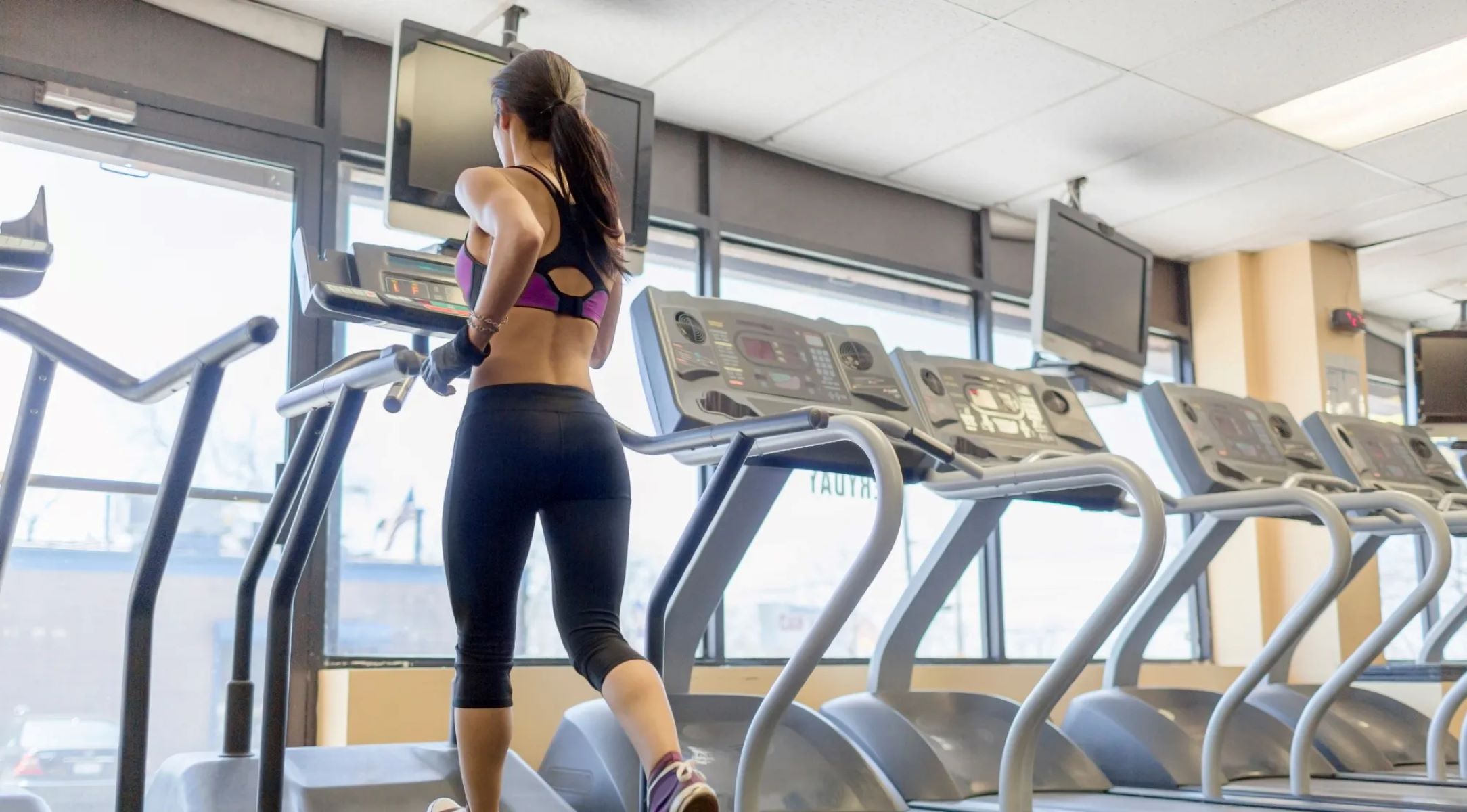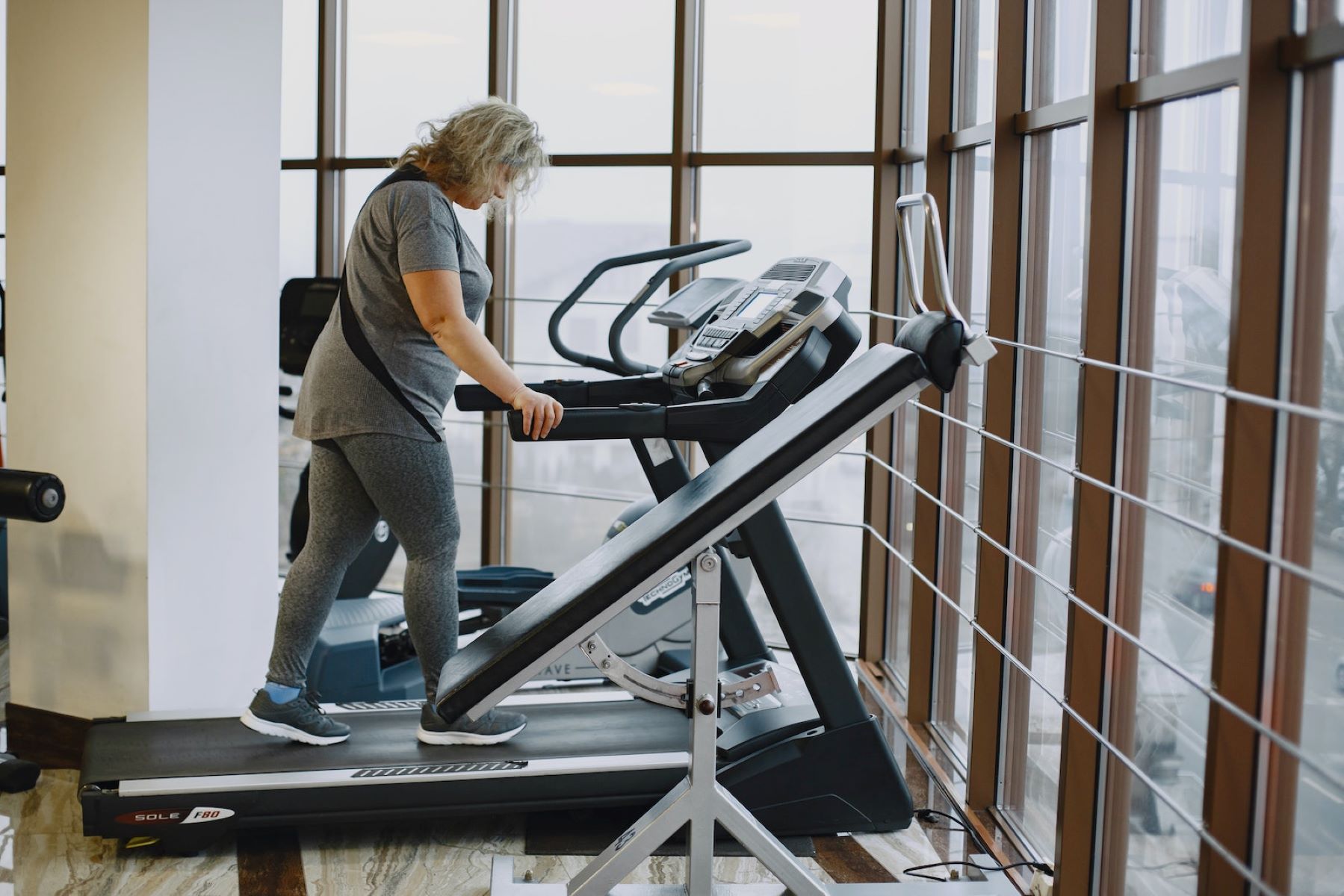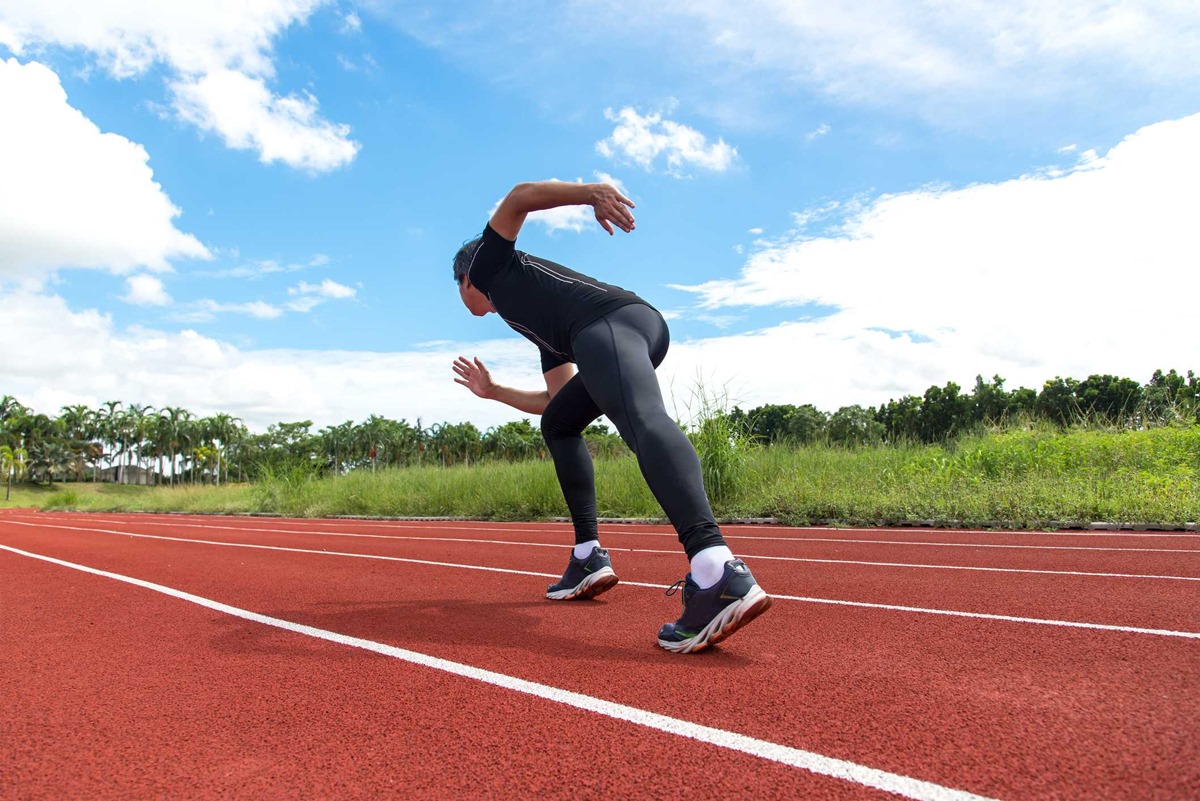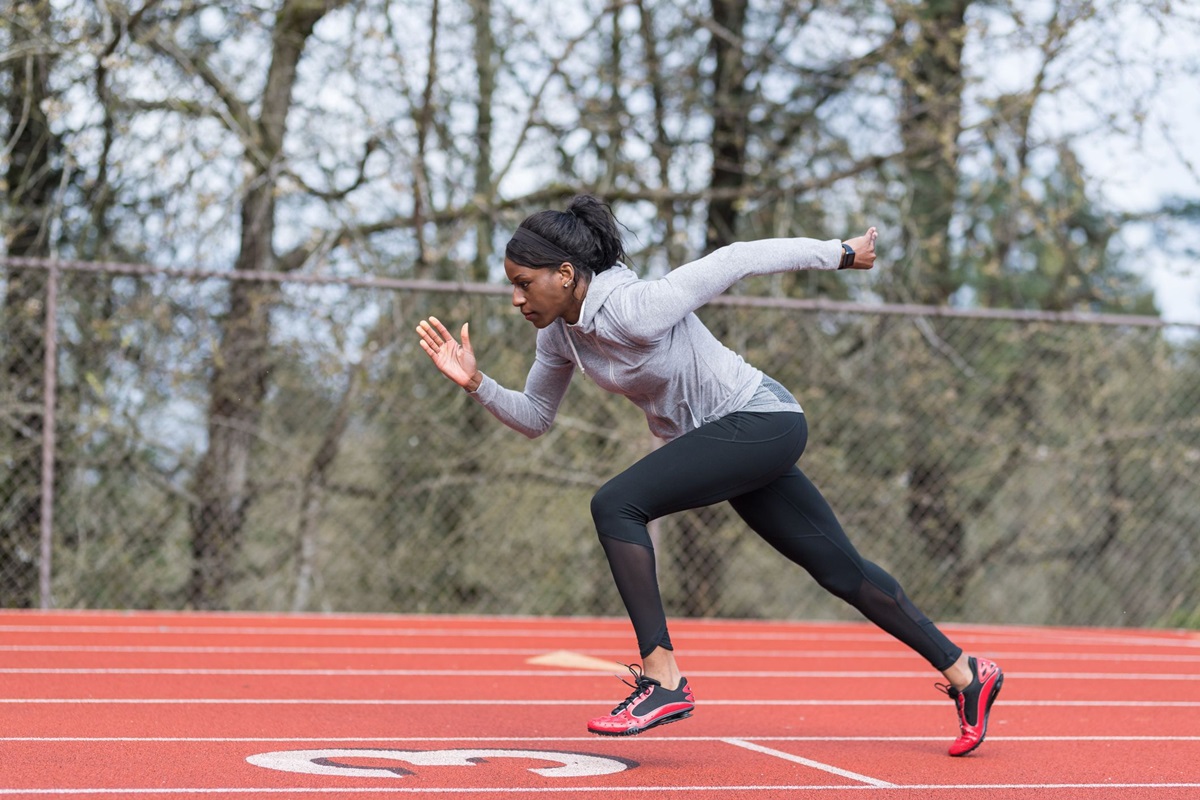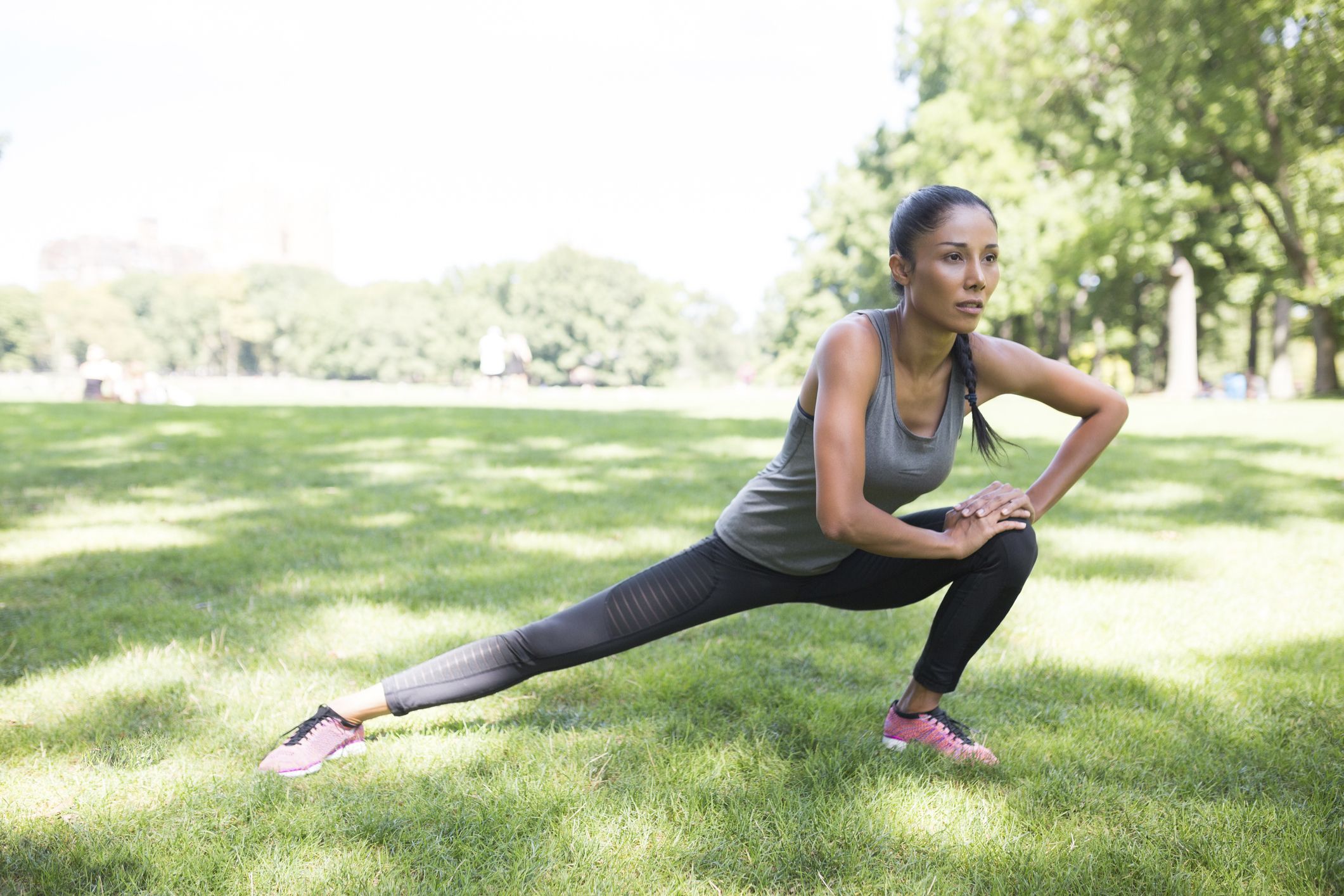

Featured
How To Warm Up Before Jogging
Modified: August 18, 2023
Learn how to warm up properly before jogging to prevent injuries and maximize your workout. Featured techniques and tips to help you get the most out of your jogging routine.
Introduction
When it comes to jogging, many people focus solely on lacing up their running shoes and hitting the pavement. However, before jumping straight into a steady pace, it’s essential to warm up your body properly. Warming up before jogging not only helps prevent injuries, but it also enhances performance and prepares your muscles and joints for the upcoming physical activity.
A proper warm-up routine consists of a series of exercises and movements that gradually increase your heart rate and flexibility. The purpose of warming up is to increase blood flow to your muscles, loosen up joints, and activate the muscles you will use during your jog. By investing a few minutes in a warm-up, you can improve your jogging experience and overall fitness level.
Whether you’re a seasoned jogger or just starting out, taking the time to warm up is crucial. It helps prepare your body for the physical demands of jogging and reduces the risk of common injuries such as muscle strains, ligament sprains, and joint pain. Additionally, a proper warm-up can enhance your jogging performance by improving your range of motion, coordination, and muscle activation.
In this article, we will explore various warm-up exercises and movements that are beneficial before a jogging session. We will cover stretching exercises to improve flexibility, dynamic movements to activate muscles, cardio warm-ups to elevate your heart rate, joint mobility exercises to increase range of motion, and breathing exercises to enhance relaxation and focus.
So, let’s dive into the importance of warming up and discover a variety of warm-up exercises that will help you get the most out of your jogging routine.
Importance of Warming Up
Warming up before jogging is not just a waste of time or a formality; it serves a crucial role in optimizing your overall workout. Here are some key reasons why warming up is important:
1. Reduced risk of injury: Starting a high-impact activity like jogging without proper warm-up poses a greater risk of muscle strains, sprains, and other injuries. A warm-up session gradually increases blood flow, warms up the muscles, and prepares the body for the stresses of running, reducing the likelihood of injury.
2. Improved muscle performance: Warming up activates the muscles you will be using during your jog, ensuring that they are ready for the exertion. This helps improve muscle performance, power output, and overall efficiency during your run.
3. Increased flexibility: Stretching exercises performed during the warm-up phase help improve flexibility and range of motion in the joints. This increased flexibility can enhance running biomechanics, leading to better running form and efficiency, as well as reduced risk of overuse injuries.
4. Elevated heart rate: Engaging in a cardio warm-up, such as brisk walking or jogging in place, raises your heart rate gradually. This increases blood flow to the muscles, delivering oxygen and vital nutrients necessary for optimal performance.
5. Mental preparation: Warming up not only prepares the body physically but also mentally. It allows you to focus your mind on the upcoming workout, improving concentration and mental readiness for the challenges ahead.
6. Enhanced circulation: Warming up stimulates blood flow throughout the body, which helps deliver oxygen and nutrients to the working muscles. Improved circulation also aids in removing metabolic waste products, such as lactic acid, which can accumulate during intense exercise.
7. Prevention of delayed onset muscle soreness (DOMS): By increasing blood flow to the muscles and promoting a gradual increase in intensity, warming up can help reduce the likelihood and severity of muscle soreness that may occur after jogging.
Remember, the warm-up should be tailored to your fitness level and specific needs. The length and intensity of your warm-up can vary depending on factors such as your age, fitness level, and the intensity of your intended workout. Spend at least 5-10 minutes on your warm-up routine to ensure maximum benefits.
By incorporating a proper warm-up into your jogging routine, you can improve your overall performance, reduce the risk of injuries, and make every run a more enjoyable and rewarding experience. So, let’s explore some effective warm-up exercises and movements to help you get the most out of your jogging sessions.
Stretching Exercises
Stretching is an important component of any warm-up routine before jogging. It helps improve flexibility, prepares the muscles for exercise, and reduces the risk of muscle strains and injuries. Here are some stretching exercises to incorporate into your warm-up:
1. Quad stretch: Stand tall and bend your left knee, bringing your left foot towards your buttocks. Grab your left foot with your left hand and hold for 15-30 seconds. Repeat on the right side. This stretch targets the quadriceps muscles in the front of your thighs.
2. Hamstring stretch: Stand with your left foot slightly in front of your right foot. Hinge forward at the hips and reach towards your left foot with both hands. Keep your back straight and hold for 15-30 seconds. Repeat on the right side. This stretch targets the hamstrings at the back of your thighs.
3. Calf stretch: Stand facing a wall with your hands against the wall at shoulder height. Step your left foot back, keeping your left leg straight and your right knee slightly bent. Lean forward into the wall, feeling a stretch in your left calf. Hold for 15-30 seconds and then switch sides.
4. Hip flexor stretch: Begin in a lunge position with your left knee on the ground and your right foot forward. Keep your torso upright and slowly lean forward until you feel a stretch in the front of your left hip. Hold for 15-30 seconds and then switch sides.
5. IT band stretch: Stand with your feet shoulder-width apart. Cross your left leg over your right leg and lean to the left, feeling a stretch along the side of your left leg. Hold for 15-30 seconds and then switch sides. This stretch targets the iliotibial (IT) band, which can become tight during running.
Remember to perform each stretch in a slow, controlled manner without bouncing, as bouncing can lead to injury. Focus on feeling a gentle stretch and never push beyond your comfort level. Stretching should be a combination of static and dynamic movements, involving both the major muscle groups and specific areas prone to tightness.
Incorporating stretching exercises into your warm-up routine can help improve your flexibility, increase joint range of motion, and promote optimal muscle function during your jog. However, it’s important to note that stretching alone is not sufficient for warming up. It should be combined with other warm-up activities, such as dynamic movements, cardio exercises, and joint mobility exercises, which we will explore in the next sections. So let’s keep stretching and get ready to hit the pavement with our jogging routine!
Dynamic Movements
Dynamic movements are an integral part of a comprehensive warm-up routine before beginning your jogging session. These exercises involve active stretching and movement patterns to engage multiple muscle groups and increase joint mobility. Dynamic movements help prepare your body for the specific movements and demands of jogging. Here are some dynamic movements to include in your warm-up:
1. Leg swings: Stand next to a wall or a sturdy object for support. Swing one leg forward and backward in a controlled manner, gradually increasing the range of motion. Repeat for 10-15 swings on each leg. This dynamic movement helps loosen up the hips, hamstrings, and quads.
2. Arm circles: Stand with your feet shoulder-width apart. Extend your arms out to the sides and make small circles in a clockwise motion. Gradually increase the size of the circles. After 10-15 seconds, switch to counter-clockwise circles. This exercise helps warm up the shoulders, chest, and upper back.
3. Walking lunges: Take a step forward with your right foot and lower your body into a lunge position. Push off your right foot and bring your left foot forward into the next lunge. Repeat for 10-15 lunges on each leg. Walking lunges engage the quadriceps, hamstrings, glutes, and calves, increasing muscle activation and range of motion.
4. High knees: Stand tall with your feet hip-width apart. Lift your right knee as high as possible while bringing the opposite arm up to meet it. Alternate between legs for 10-15 repetitions on each side. High knees help warm up the hip flexors, quads, and core muscles while promoting cardiovascular endurance.
5. Butt kicks: Stand tall with your feet hip-width apart. Kick your right heel up towards your glutes as you alternate between legs. Aim to touch your glutes with your heels with each kick. Repeat for 10-15 kicks on each leg. Butt kicks engage the hamstrings and calves while improving coordination and running mechanics.
Dynamic movements increase blood flow and tissue temperature, activate the muscles, and improve joint mobility. They also help increase range of motion and enhance neuromuscular coordination, allowing for better performance during jogging. Remember to perform these movements in a controlled manner, gradually increasing the intensity and range of motion while maintaining proper form.
By incorporating dynamic movements into your warm-up routine, you can effectively prepare your body for the specific movements and demands of jogging. These exercises enhance muscle activation, joint mobility, and overall performance, making your jogging experience safer, more enjoyable, and more effective. So let’s get moving and get ready to hit the road for a great jog!
Cardio Warm-Up
Engaging in a cardio warm-up before jogging is crucial to elevate your heart rate, increase blood flow, and prepare your cardiovascular system for the upcoming physical activity. A cardio warm-up helps raise your body temperature, improve oxygen uptake, and enhance overall endurance. Here are some effective cardio warm-up exercises you can incorporate into your routine:
1. Brisk walking: Start your warm-up with a few minutes of brisk walking. Maintain a pace that is faster than your normal walking speed, but not as intense as jogging. This helps gradually increase your heart rate and warm up your muscles.
2. Jogging in place: Stand with your feet hip-width apart and jog in place, lifting your knees and swinging your arms. Perform this exercise for 1-2 minutes to further elevate your heart rate and warm up your leg muscles.
3. Jumping jacks: Begin with your feet together and your arms at your sides. Jump, spreading your feet shoulder-width apart while simultaneously raising your arms above your head. Return to the starting position and repeat for 10-15 repetitions. Jumping jacks help engage your entire body, increase heart rate, and activate major muscle groups.
4. Skipping: Skip forward, bringing your knees up towards your chest as you propel yourself forward. Continue for 30-60 seconds, focusing on maintaining a rhythmic and smooth skipping motion. Skipping is a dynamic movement that elevates your heart rate and engages your lower body muscles.
5. Jump rope: If you have access to a jump rope, incorporate a few minutes of jumping rope into your warm-up routine. This high-intensity cardio exercise helps increase heart rate and coordination while working various muscle groups throughout the body.
Remember to start with a moderate intensity and gradually increase the pace and duration of your cardio warm-up. The goal is to raise your heart rate and break a light sweat, but not to exhaust yourself before the main jogging session.
A good cardio warm-up prepares your body for the cardiovascular demands of jogging, activates your aerobic energy system, and increases circulation to your working muscles. It also mentally prepares you for the upcoming physical activity, allowing you to transition smoothly into your jog.
Incorporating a cardio warm-up into your routine will help improve your overall endurance, oxygen uptake, and performance during your jogging session. So, let’s get that heart pumping and warm up those muscles to unleash your full jogging potential!
Joint Mobility Exercises
Joint mobility exercises are essential for warming up and preparing your joints for the impact and range of motion involved in jogging. These exercises focus on increasing the mobility, flexibility, and stability of your joints, reducing the risk of injuries and enhancing overall performance. Here are some effective joint mobility exercises you can incorporate into your warm-up routine:
1. Ankle circles: Sit on the ground with your legs extended in front of you. Lift one foot off the ground and rotate your ankle in a circular motion, making clockwise circles for 10 repetitions and then counter-clockwise circles for another 10 repetitions. Switch to the other foot. Ankle circles help warm up the ankle joint and improve ankle mobility.
2. Knee hugs: Stand tall with your feet hip-width apart. Lift your right knee towards your chest, clasping your hands around it. Hold for a few seconds, release, and then repeat with the left knee. Perform 5-10 knee hugs on each leg to promote knee mobility and flexibility.
3. Hip rotations: Stand with your feet shoulder-width apart and your hands on your hips. Rotate your hips in a circular motion, making clockwise circles for 10 repetitions and then counter-clockwise circles for another 10 repetitions. Hip rotations help warm up the hip joints and increase hip mobility.
4. Shoulder circles: Stand with your feet shoulder-width apart and extend your arms out to the sides. Make circular motions with your shoulders, rolling them forward for 10 repetitions and then backward for another 10 repetitions. Shoulder circles help mobilize the shoulder joints and improve shoulder flexibility.
5. Neck rotations: Stand tall with your feet hip-width apart. Gently rotate your head in a circular motion, making clockwise circles for 10 repetitions and then counter-clockwise circles for another 10 repetitions. Neck rotations help warm up the neck joints and increase neck mobility.
Performing joint mobility exercises before jogging helps increase the range of motion in your joints, improves lubrication, and enhances joint stability. It also reduces the risk of joint-related injuries and allows for smoother, more efficient movements during your run.
Remember to perform these exercises in a controlled manner, without any pain or excessive force. Start with small movements and gradually increase the range of motion as your joints warm up. Focus on maintaining proper form and alignment throughout the exercises.
By incorporating joint mobility exercises into your warm-up routine, you can optimize your joint function, reduce the risk of injuries, and ensure a more comfortable and efficient jogging experience. So, let’s get those joints moving and ready for a great run!
Breathing Exercises
Breathing exercises are often overlooked when it comes to warming up before jogging, but they can play a crucial role in preparing your body for the physical activity and maximizing your running performance. By incorporating specific breathing techniques into your warm-up routine, you can improve lung capacity, enhance oxygen intake, and promote relaxation and focus. Here are some effective breathing exercises to try before your jog:
1. Deep belly breathing: Begin by standing in a comfortable position with your feet shoulder-width apart. Place one hand on your chest and the other hand on your belly. Take a slow, deep breath in through your nose, allowing your belly to rise as you fill your lungs with air. Exhale slowly through your mouth, contracting your belly towards your spine. Repeat this deep belly breathing for several breaths, focusing on fully expanding your lungs and releasing tension with each exhale.
2. 4-7-8 breathing: This technique, also known as the “relaxing breath,” helps to calm the mind and relax the body. Start by sitting or standing in a relaxed position. Inhale quietly through your nose for a count of 4. Hold your breath for a count of 7. Exhale completely through your mouth for a count of 8. Repeat this cycle of breath for several rounds, allowing the breath to flow smoothly and naturally.
3. Alternate nostril breathing: Close your right nostril with your right thumb and take a deep breath in through your left nostril. At the top of the inhale, close your left nostril with your right ring finger and release your thumb from your right nostril. Exhale slowly through your right nostril. Continue this pattern, inhaling through the left nostril and exhaling through the right nostril for several breaths. This technique helps balance the flow of energy and oxygen in the body while promoting a calming effect.
4. Box breathing: Picture a square or a box in your mind. Inhale deeply through your nose for a count of 4 as you trace the top edge of the square. Hold your breath for a count of 4 as you trace the right edge. Exhale slowly through your mouth for a count of 4 as you trace the bottom edge. Hold your breath for a count of 4 as you trace the left edge. Repeat this cycle of breath, tracing the edges of the imaginary square, for several rounds.
By incorporating breathing exercises into your warm-up routine, you can improve your lung capacity, increase oxygen intake, and promote a state of relaxation and focus. These exercises not only enhance the physical aspect of your jog but also create a mental and emotional connection to your running experience.
Remember to practice these breathing exercises in a comfortable and controlled manner. If you experience any dizziness or discomfort, adjust the pace and depth of your breaths. It’s important to listen to your body and find a breathing technique that works best for you.
So, before you hit the pavement, take a few moments to focus on your breath and engage in these breathing exercises. By doing so, you can optimize your lung function, enhance your overall running performance, and create a sense of calm and presence as you embark on your jogging journey.
Conclusion
Incorporating a comprehensive warm-up routine before jogging is essential for maximizing your performance, reducing the risk of injuries, and enhancing your overall running experience. By taking the time to properly warm up your body, you can prepare your muscles, joints, cardiovascular system, and mind for the demands of jogging.
We explored the importance of warming up and discussed various components of an effective warm-up routine. Stretching exercises help improve flexibility and increase range of motion. Dynamic movements engage multiple muscle groups and activate your body for optimal performance. Cardio warm-up exercises elevate your heart rate, increase blood flow, and improve endurance. Joint mobility exercises enhance joint function and reduce the risk of injuries. Finally, breathing exercises promote relaxation, focus, and optimal oxygen intake.
Remember that a warm-up routine should be tailored to your fitness level, goals, and specific needs. Spend at least 5-10 minutes on your warm-up, gradually increasing the intensity and duration as your body becomes more accustomed to the exercises. Always listen to your body and adjust the warm-up routine accordingly.
By incorporating a proper warm-up into your jogging routine, you can optimize your performance, reduce the risk of injuries, and create a more enjoyable and rewarding running experience. So, before you hit the pavement, take the time to warm up your body and prepare yourself for a successful jog.
Now that you have the knowledge and tools to warm up effectively, lace up your running shoes, step outside, and enjoy a safe and invigorating jog!
